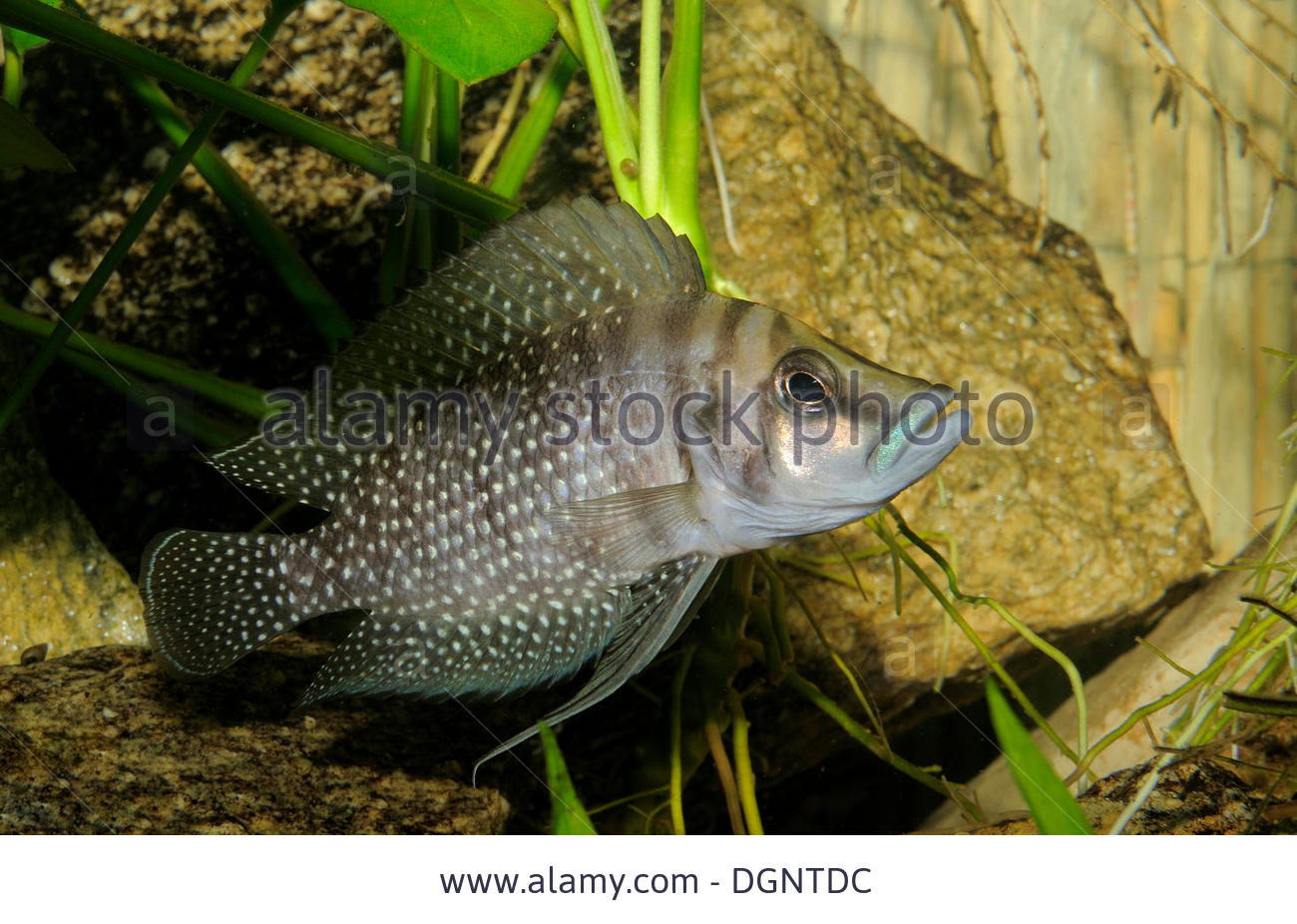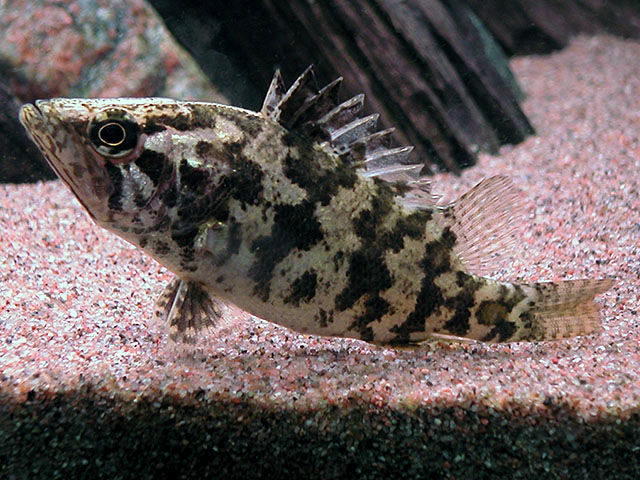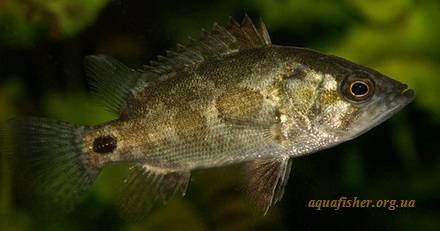
Nandus nandus
FAMILY
Nandidae
TAXONOMY
Nandus nandus Hamilton, 1822, Gangetic Provinces of India.
OTHER COMMON NAMES
None known.
PHYSICAL CHARACTERISTICS
Typically basslike; pale olive-bronze color with loosely
arranged vertical brownish olive bands along the flank and extending
into dorsal fin. Noted for its sharp dorsal, pelvic, and
anal spines.
DISTRIBUTION
From Pakistan east to Thailand.
HABITAT
Benthopelagic in freshwater ponds, ditches, flooded fields,
lakes, reservoirs, canals, rivers, and estuaries.
BEHAVIOR
Often cryptic and holding to cover from where it can ambush
prey.
FEEDING ECOLOGY AND DIET
Gangetic leaffishes are predators that feed upon smaller fishes
and aquatic insects.
REPRODUCTIVE BIOLOGY
Gonochoristic. Males clean a spawning site, usually a rock or
leaf, and then court the female, who spawns around 200–400
demersal eggs that are fertilized by the male. Male parental
care has been observed in aquaria.
CONSERVATION STATUS
Not listed by the IUCN.
SIGNIFICANCE TO HUMANS
A prized food fish. Juveniles may also be taken for the aquarium
trade.
Other popular Animals
Photo Gallery of - Gangetic leaffish





 Animalia Life
Animalia Life